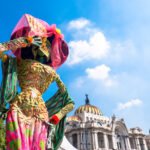Day of the Dead, arguably the most vibrantly colorful, cheerful, and artful festivity on earth, is celebrated throughout Mexico, but Oaxaca City is said to be one of the best places to be—if not THE place—to experience the ecstasy of being alive.
If you haven’t read my holy guide to the Death and Day of the Dead in Mexico City, please do so now as I am not going to repeat the basic topics like what’s Dia de Muertos, when it’s celebrated, and the symbols such as La Catrina or altars. In this post particularly, I’ll recount the different and exciting things you can witness during Day of the Dead in Oaxaca City.
Please note: “Dia de los Muertos” is a back translation from English. The correct usage is Dia de Muertos.
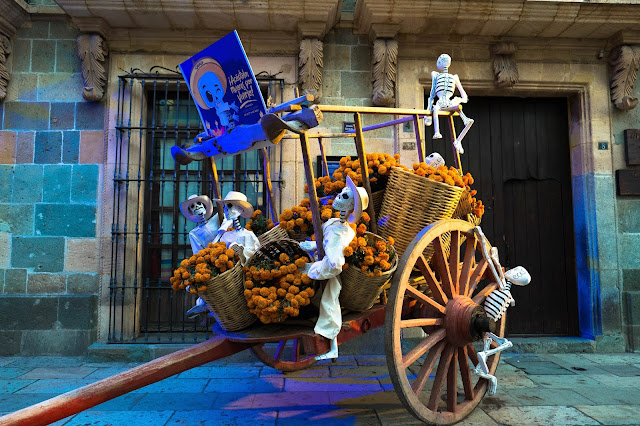
Oaxaca Day of the Dead Quick Links:
Dia de Muertos in Oaxaca City take place over several days, usually an entire week including the period from October 31 to November 2.
In 2018 (and later in 2022), I had the privilege of spending 4 days and 3 nights in Oaxaca City to experience this unique festival with cheerful melodies and dancing all over the city. The official events in 2018 were scheduled from 28 October to 3 November 2018, and there is indeed a whole program with so much to do, from visiting colorful markets to chasing wild and jovial comparsas, night ceremonies at various cemeteries, all that is something I’ll never forget.

As soon as we checked in to our accommodation, we followed our ears straight to the iconic Santo Domingo Cathedral in the center and found ourselves in the middle of the party that would continue non-stop pretty much at any hour of the day and night in the streets and public squares. Even on our last day, I was still so mesmerized as if it was my first day that I couldn’t help but throw myself into the wave of human bodies, or skeletons, chanting and dancing.
Okay, okay, I’ll stop raving about it and get down to the point, although there is in fact only one thing I can really recommend: when in Oaxaca simply get lost by following the beating drums! It’s just that easy to make the best out of your visit to Oaxaca. The cheerful beats will not only lead you the way but continue to play in your ear long after you return home.
Highlights of Oaxaca Day of the Dead Celebrations
Day of the Dead Comparsas in Oaxaca
During Day of the Dead celebrations in Oaxaca, you’ll sooner than you think come upon comparsas. A comparsa is a carnival-like parade involving people in costumes, dancing performers, and marching bands winding their ways through the streets. These parades symbolizing the return of the dead take place in many different neighborhoods of Oaxaca, and also in nearby villages. They begin at one home and wait for the dead to join them, and later converge in streets.

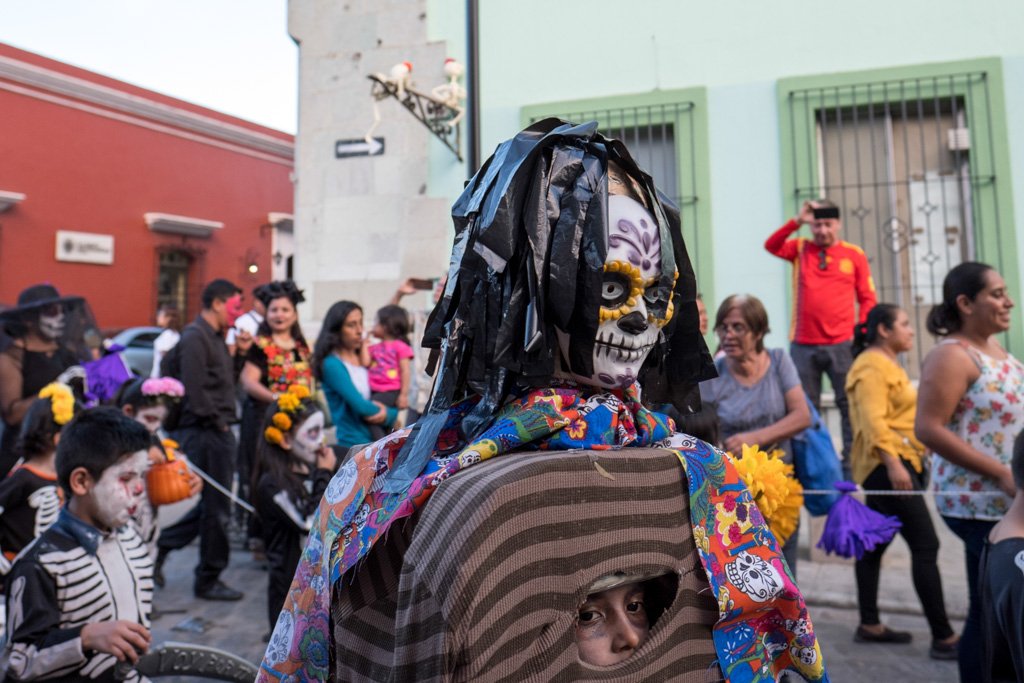

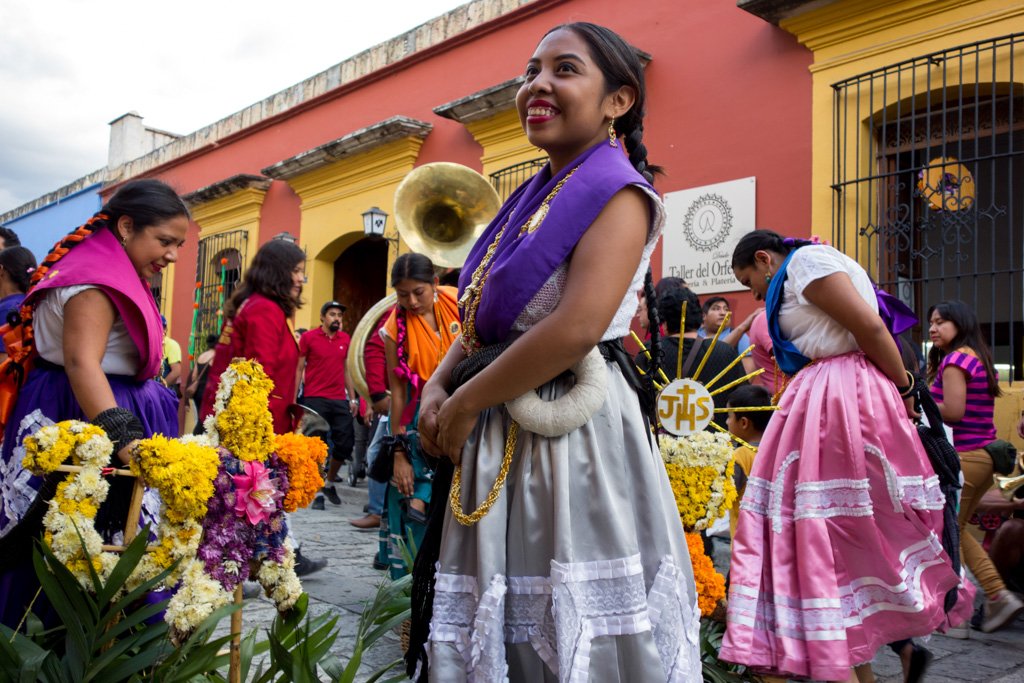
Each and every day we spent here, we came across several bands playing, people dancing, some with spinning globes and others on stilts, well, and of course skeletons in many different shapes and sizes. Just watch the video at this link https://youtu.be/S2rV2pMMs-0 for a taste of the mega-fun.
Day of the Dead Costumes in Oaxaca
Mexicans have a sense of humor about death, and dressing up as skeletons is part of the fun. People of all ages don fancy dresses and costumes, they have their faces artfully painted in typical la Calavera Catrina style, some even don flowers in their hair to honor their dead during Dia de Muertos. You can get some make-up if you want, and trail along with one of the many parades passing by to take part in the fun and excitement. The locals will be more than happy to share their traditions with you. Yeah, they do proudly pose for photos, but not for money. It’s their pride.
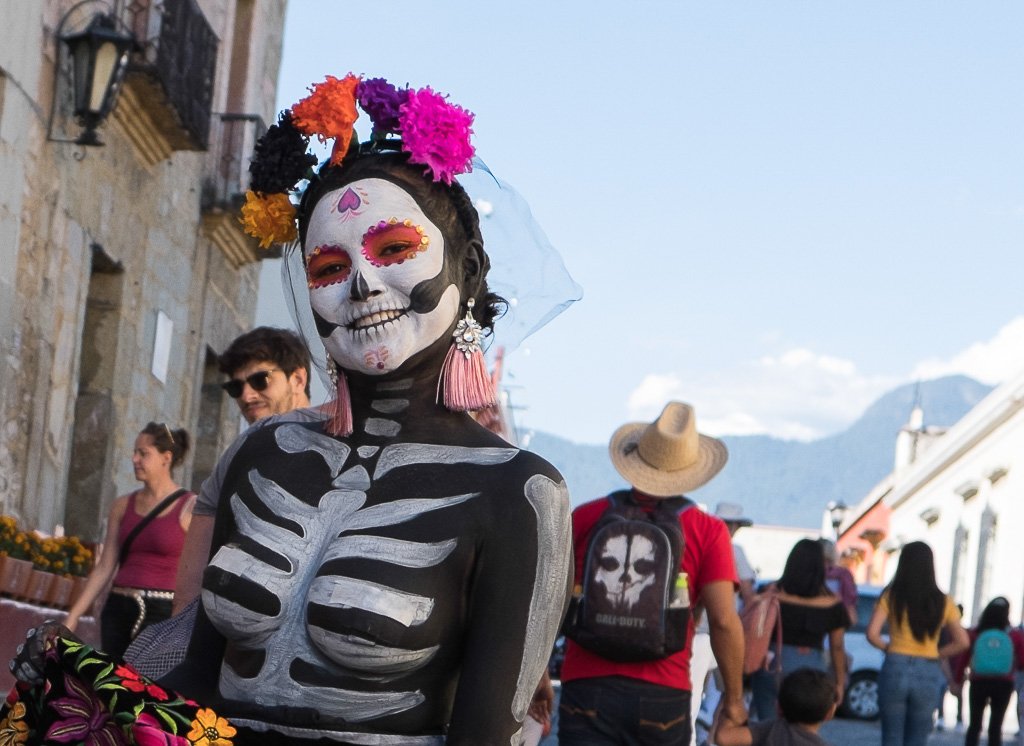
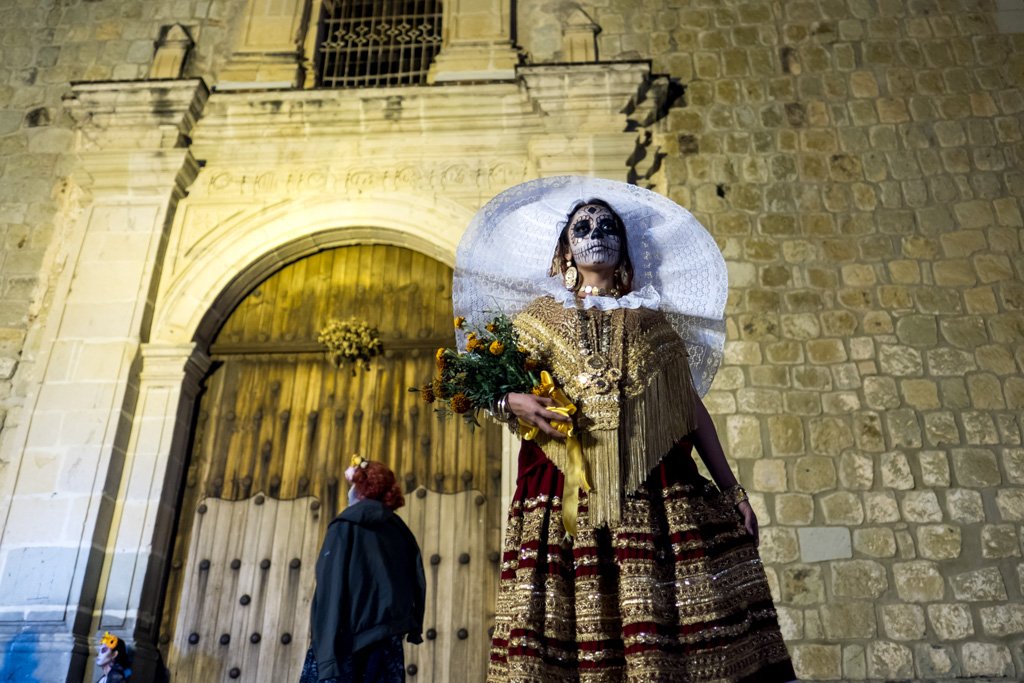
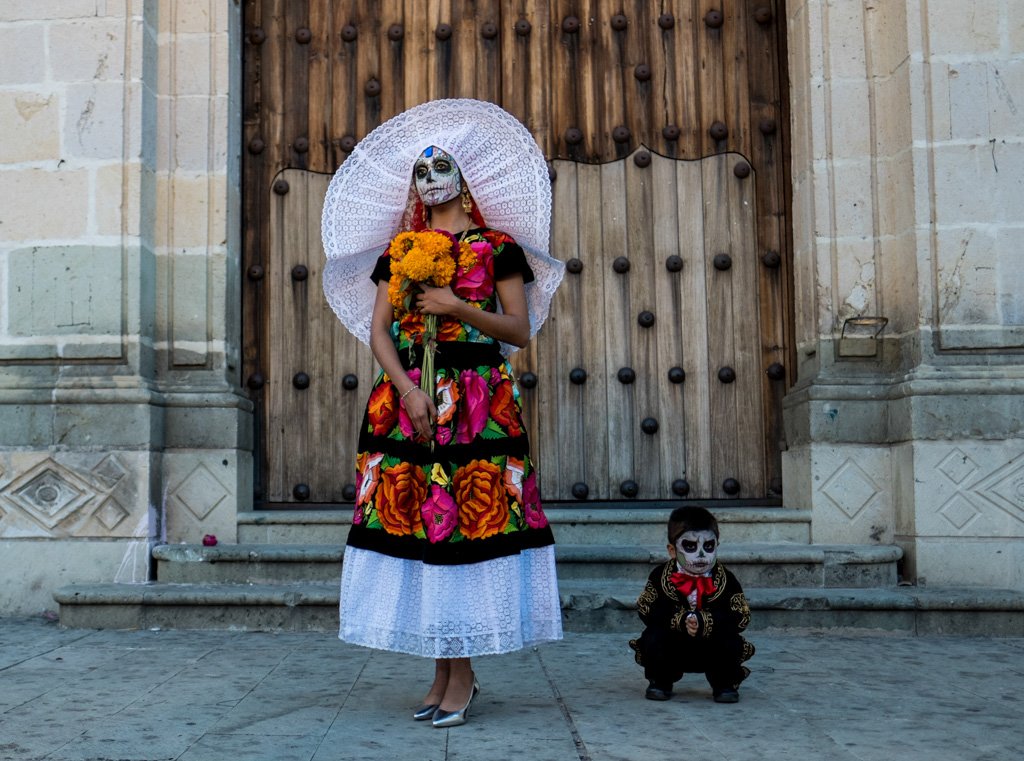
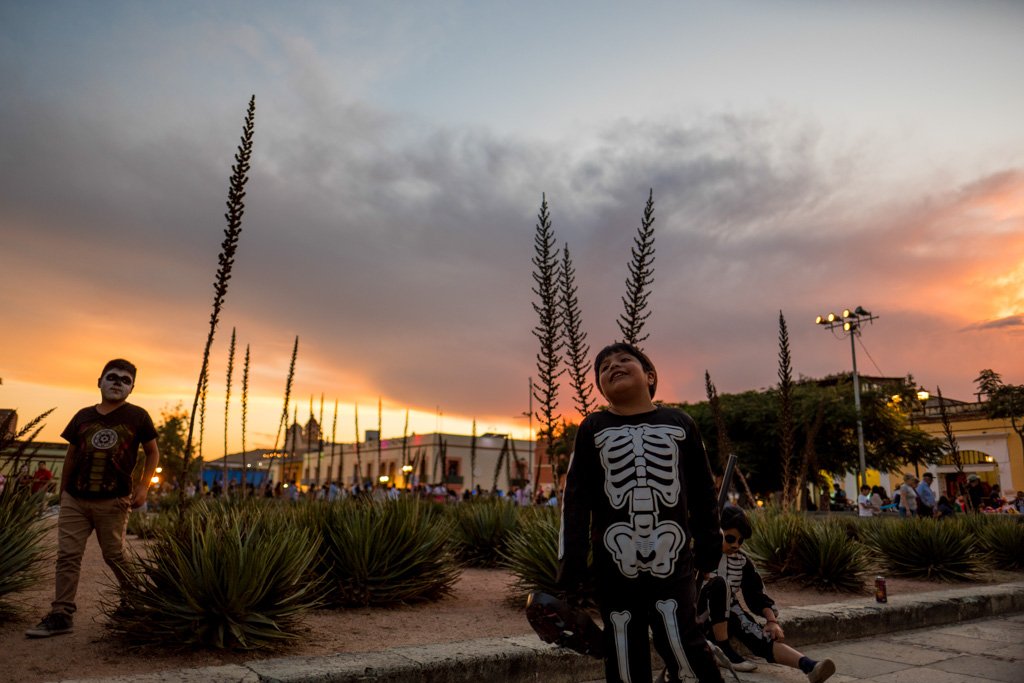
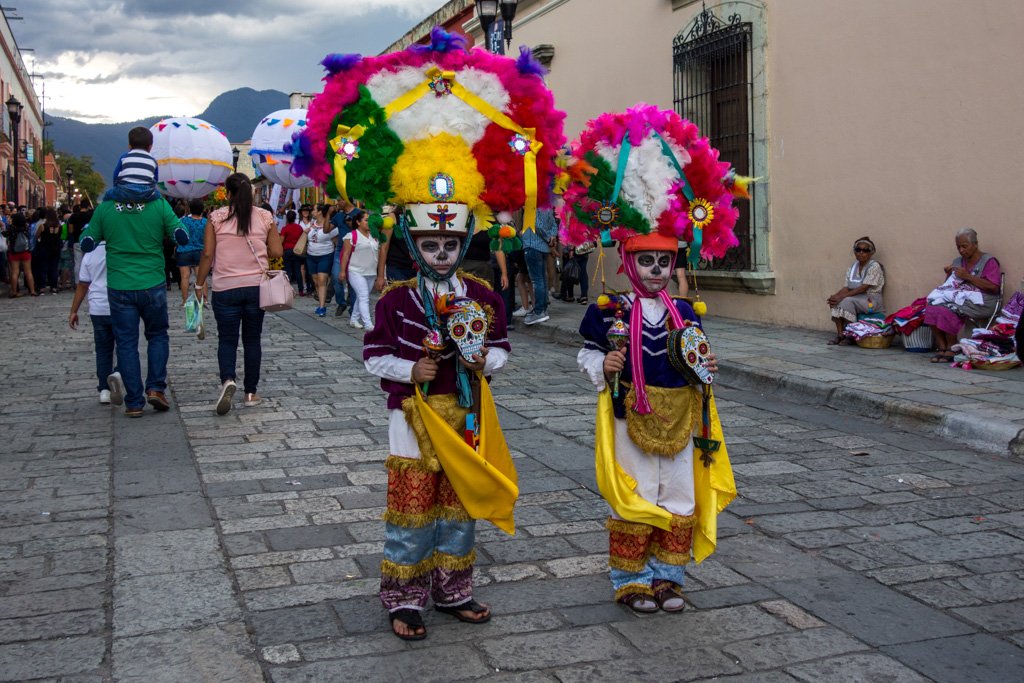

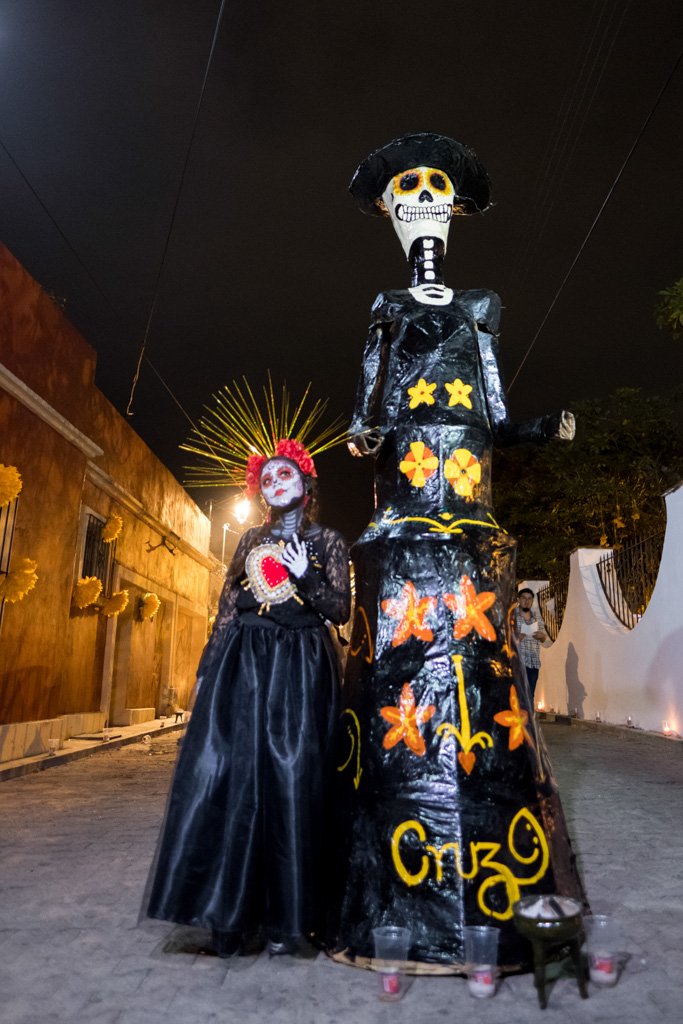
Day of the Dead Markets in Oaxaca
As Día de Muertos is such an important celebration, the markets will be full of the supplies needed to prepare altars and special foods for the deceased loved ones. So, paying a visit to a local market is an essential part of your trip to Oaxaca. The 20 de Noviembre Market in the city or a trip out to one of the villages like the Friday market in Ocotlan is equally good in order to people-watch and sample some traditional food and drinks.



Day of the Dead Altars and Sand Tapestries in Oaxaca City
Frankly, I wasn’t quite interested in the altars here in Oaxaca, after having seen too many in Mexico City. But it’s absolutely noteworthy to mention that sand tapestries play an important role in Day of the Dead celebrations in Oaxaca. Artists create beautiful sand tapestries in front of many altars. Colored sand is used to depict usually a religious image or skeletons. Well, here you go: just a few samples of altars with sand tapestries, as said though, they were not really under my radar.
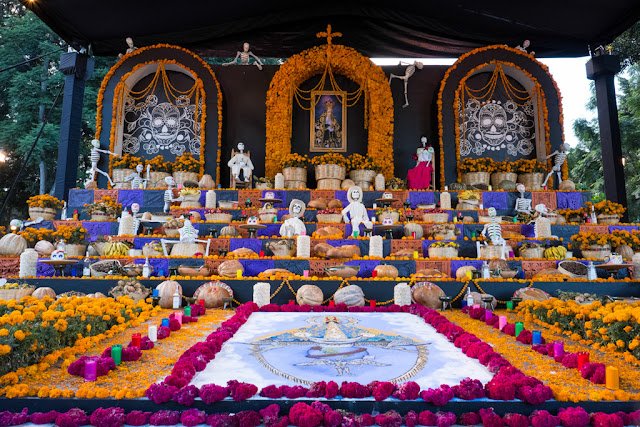
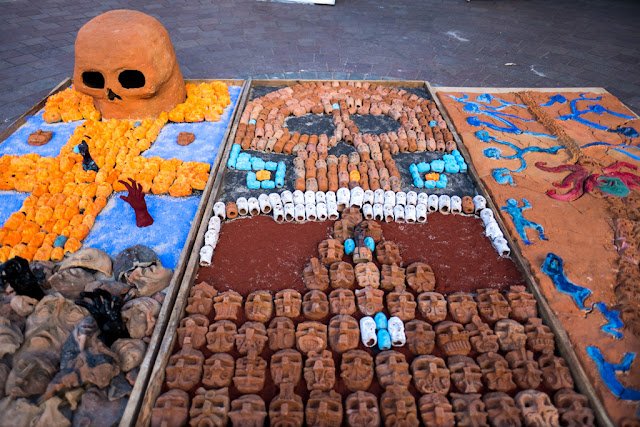
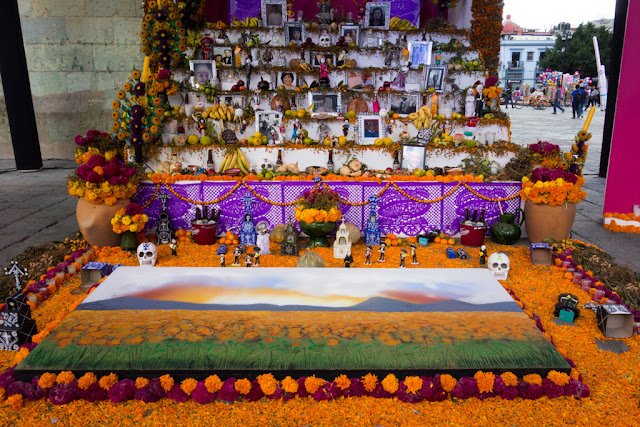
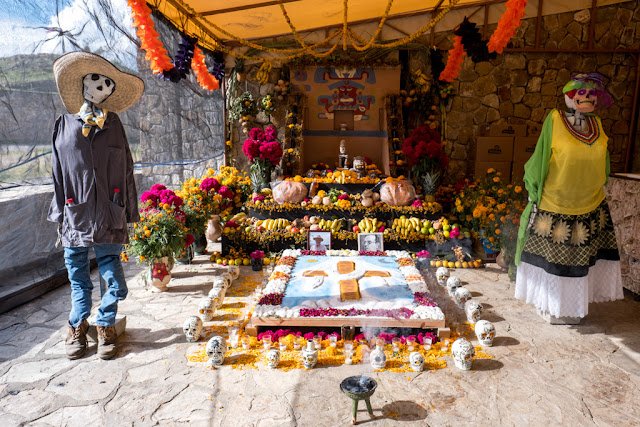


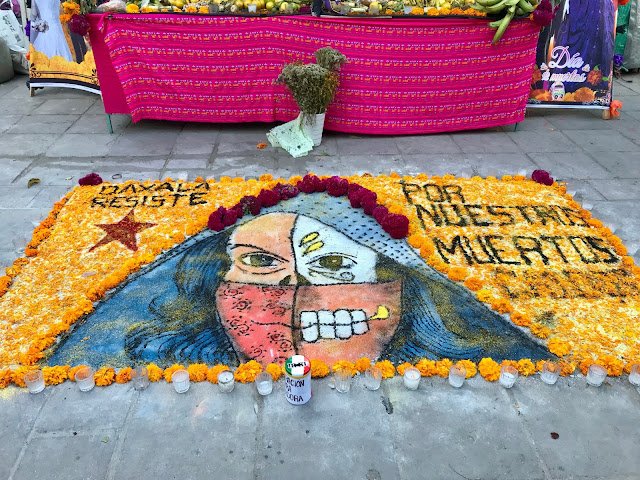
While wandering around Oaxaca during Day of the Dead, you’ll surely find many of these on the streets, in the courtyard of some hotels, shops, restaurants, and certain public buildings.
Cemetery Celebrations during Dia de Muertos in Oaxaca
A highlight of Day of the Dead celebrations in Oaxaca is a visit to the graveyards and join with the local families as they rejoice over the reunion with their departed loved ones by singing, eating, and drinking. From live bands to intricate grave decorations with bouquets of flowers, candles, and the favorite foods and drinks of the deceased, the cemeteries resemble a fairground during Dia de Muertos.
To me personally, this brings up the question of whether the Mexicans don’t have any respect, how they dare to treat cemeteries as fairgrounds?! Both in Turkey and Germany, cemeteries are gloomy places where one should respect the dead and behave accordingly. We are grandchildren of a generation that said: “No laughing at my funeral/grave!” Probably that’s why I tend to avoid not only cemeteries but also streets surrounding, both day and night. They are just scary places for me, but it’s a whole different story in Mexico. The graveyards are not a place of somber but alive with laughter, joy, and colors as the locals warmly welcome back the departed souls.
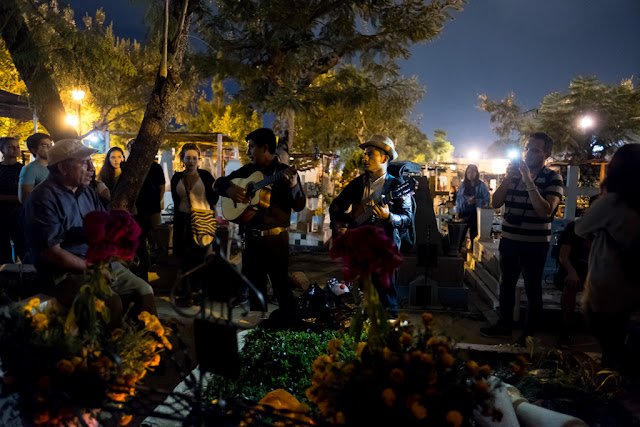

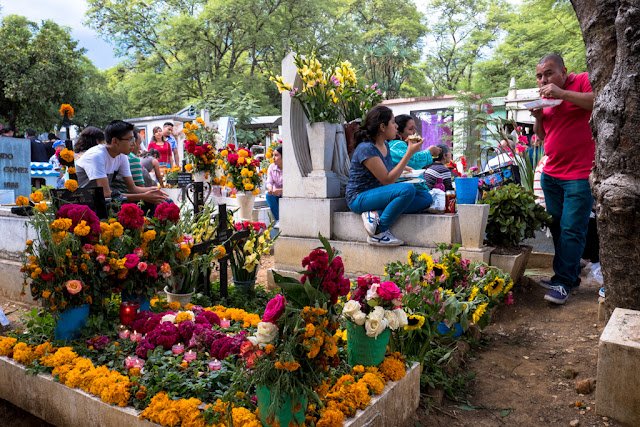
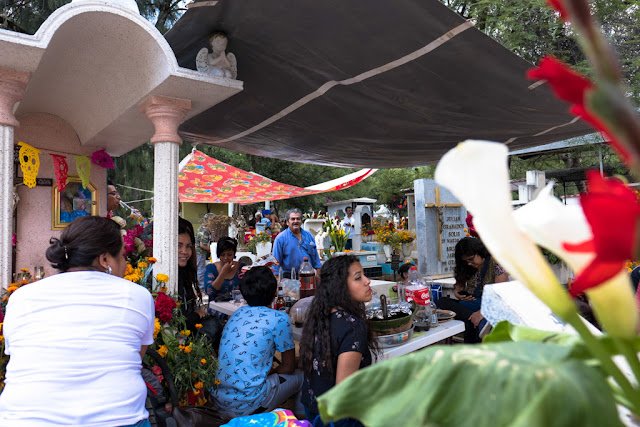
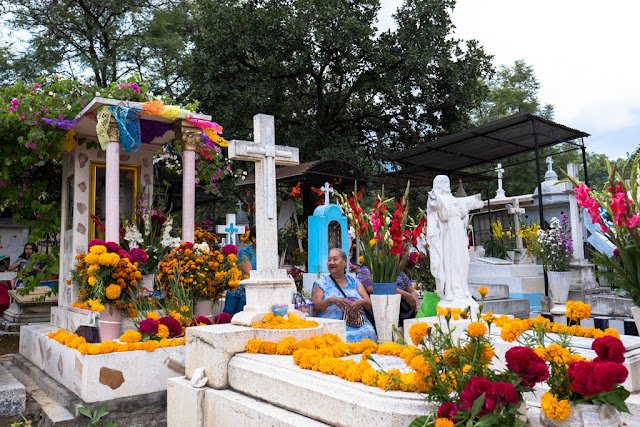
It’s a stirring sight to behold, local families having a picnic at their beloved one’s tombs. Some families had set up chairs, and tables where food and drinks were laid out for everyone to enjoy, some even playing music. Obviously, the deceased loved ones were back and they all were reminiscing about the good times spent together with musicians strolling the cemetery hired to play the dead person’s favorite songs, mezcal toasts made in honor of the lives of the loved ones (watch the clip here: https://youtu.be/_C-quAdQ0Dk).
No fear, no tears, but laughter and joy to honor the dead people. A behavior, driven by love or fear? The choice is yours.
Tips on Trip Planning to attend Dia de Muertos Oaxaca
Day of the Dead is one of Oaxaca’s most busy tourist times. I highly recommend booking your accommodation as early as possible. I booked ours just two weeks ahead but had a hard time finding a place reasonably priced and not too far from the center. Furthermore, here you’ve got some quick tips for visiting Oaxaca during Day of the Dead festivities:
- Don’t expect to find the exact schedule before September, but if you plan on spending October 30-31 to November 2-3 in Oaxaca City, you’ll surely find huge celebrations all around. I found the night from November 1 to 2 more lively with celebrations going on late through the night, possibly because November 2 is a public holiday for Mexicans.

- To get to Oaxaca City, you can either fly into Xoxocotlán International Airport (OAX) or take a bus from Mexico City (about six-seven hours by ADO Bus, Mexico’s tourist-class bus company).
- Once there, pick up a brochure with the festival schedule at a tourist booth (there will be booths all over town, the most obvious one is in front of the Santo Domingo Church) so you know where the best celebrations will be.
- Some of the main events for 2018 Dia de Muertos in Oaxaca included:
Magna Comparsa (Mega Parade)
Dia de Muertos Altar at Zócalo (main plaza)
Feria de Pan y Chocolate (Chocolate and Bread Festival)
Costume and altar contests, dance shows
Video mapping, free concerts and sand tapestries at Plaza de la Danza(see the video https://youtu.be/WtruCrOlfEE)
- Some of the main events for 2018 Dia de Muertos in Oaxaca included:
- Don’t be shy to check out the courtyards of hotels, restaurants, and shops to see the altars, sand tapestries, and other decorations.
- Visit markets like Mercado Benito Juarez and 20 de Noviembre to try local food and shop for souvenirs.
- Just get lost and keep an eye (or ear) out for comparsas, always.
Which Cemetery to Visit in Oaxaca for Day of the Dead
There are several cemeteries to visit for Day of the Dead, but before you go, you need to ensure that:
- The cemetery will be open late in the night meaning that you’ll find families sitting by the grave and celebrating their beloved ones return.
- The cemetery welcomes tourists
Since ceremonies at graveyards are a private issue, there is no set schedule but it might be worth checking with a tourist info agent. Better yet, if you befriend any locals, ask for their advice on which one to go to.
Nonetheless, one of the main cemeteries to visit is the Panteon General (the Oaxaca General Cemetery). When I visited this particular cemetery, it was closed to the public after 6 pm, so my first attempt to enter it at around 10 pm failed but the streets were still busy with people. The streets around the General Cemetery in Oaxaca seemed like a fairground with food stalls, flowers, and toys vendors, and other carnival-like entertainment options.
On that night on our way home, we came across a smaller neighborhood cemetery, Panteon Barrio Xochimilco that was open late in the night (we followed our ears once again). I went to the General Cemetery on another day during the daytime to see the altars, how the families prepare the graves for the return of departed souls.
There are many other cemeteries to visit in the neighborhoods and villages around Oaxaca. There are also organized tours to Xoxo or San Agustin Etla, you’ll certainly bump into tour offers while roaming in the city. Rumor has it that they became too touristy, hence we didn’t join the guided tours.
What else to do in Oaxaca
There are plenty of day trip options in the area that you could easily spend an entire week in Oaxaca. For example, El Tule, the largest tree in the world, Monte Alban ruins for the breathtaking views over the city, impressive Hierve El Agua, several indigenous village tours, or if you have more time you may want to consider spending a couple of days at the wonderful beaches on Oaxaca’s Pacific coast, such as the ones in the Bay of Huatulco.




Final words on Oaxaca Day of the Dead Celebrations
All in all, rest assured no matter what you end up doing, once you have seen the dead through the kaleidoscope of Dia de Muertos celebrations in Oaxaca, you will be dreaming of returning to this festival involving so much sweetness, joy, and colors🧡💚💙💛
Till then, let’s cherish a few more moments from my visit in 2018 with the event’s motto: “¡Acéptalo, mueres por vivirlo!”[Accept it, you die to live it]!



















Update 2024: We returned to Oaxaca City with a group to attend the festivities of Dia de Muertos in 2022, which was the first one after the pandemic. To our surprise, there weren’t nearly as much going on as before (perhaps due to aftermaths of the pandemic), and the city became a bit too commercial for our taste.
If you know us, one thing we don’t admire is mass tourism/mainstream. Nevertheless, if it’s going to be your first time joining Day of the Dead in Mexico, we believe you would still enjoy Oaxaca City, and in fact you might enjoy the cute town shortly before or after the Dia de Muertos more.
We spent the entire 2022 exploring off-the-beaten-path parts of Mexico, and will be revealing our new favorites soon. Any questions, leave a comment below or contact us at team [at] earthmaho.com.



